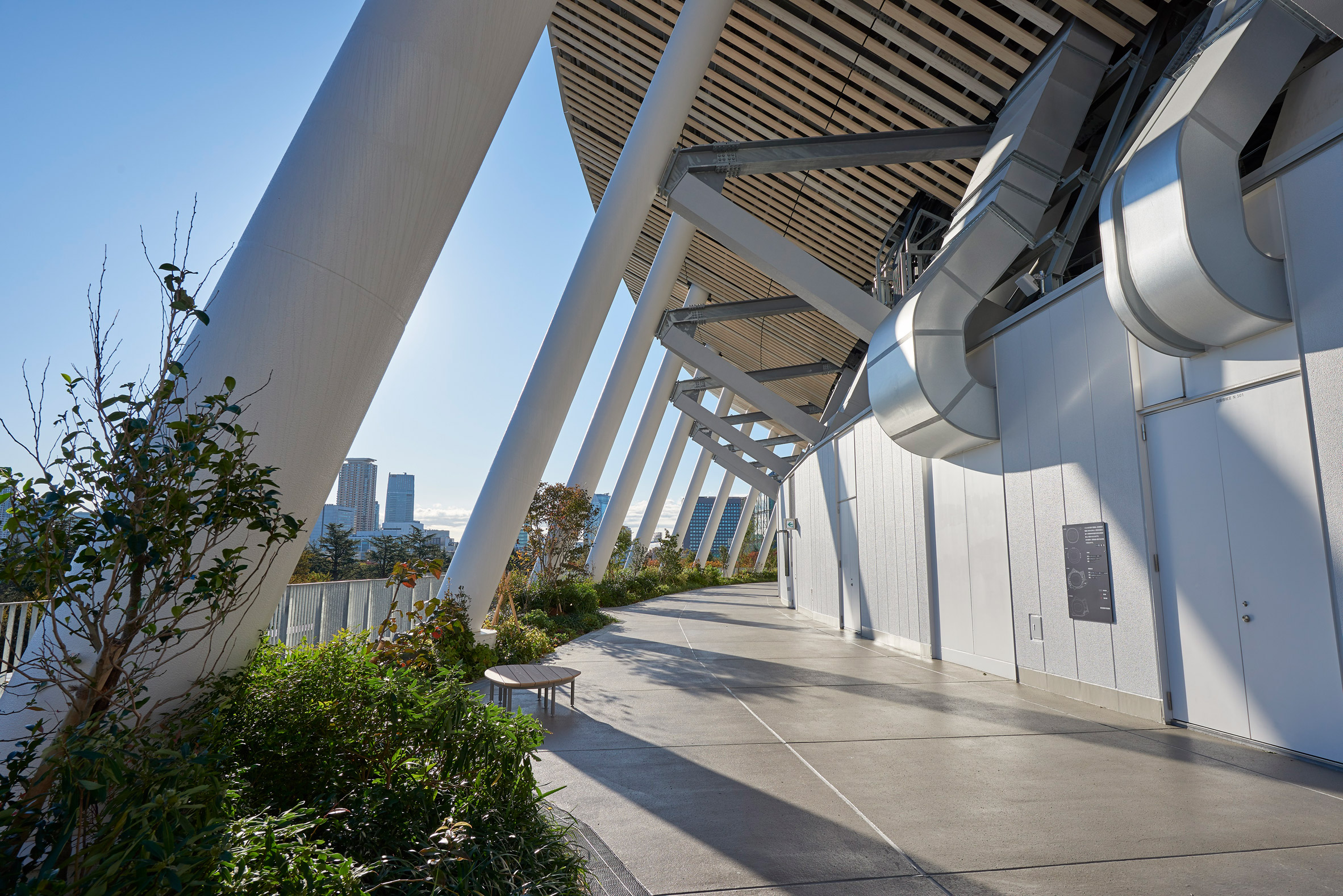

An athletics formatted bowl is not acceptable to FIFA and will not be acceptable to J League for national football events. If football is watched from the distance of an athletic seating arrangement it’s too far away to create atmosphere and it will not be popular. If the government decides to change their brief to a fixed athletic seating bowl of 80,000 seats, it will not be sustainable. The current design was defined by the client’s brief which is an outcome of their legacy business plan which needs to generate revenue from key stakeholders such as the J League.įor the past two years the clients brief was for a multi-purpose stadium with an adjustable seating bowl which is able to switch sports modes between athletics or football with an operable roof to close the roof opening and allow concerts. The form of the stadium has been driven in response to the functional planning requirements of the stadium and responded closely to the volumetric constraints imposed on this building by the local planning authority requirements. Following the Olympics it is proposed that flexible areas of seating are adapted to enhance the commercial revenue that can be generated by the facility in legacy mode. The seating bowl is adaptable, and has been designed to allow for the scale of the stadium to remain compact. The design of the bowl will bring spectators as close as possible to the athletics track and jumps, and will not compromise the viewing experience of spectators during football or rugby events. The seating bowl has been optimised to suit both Rugby World Cup and Olympic events, with a permanent athletics track to be inserted within the stadium. The interior of the stadium is also given a clearly identifiable identity through the strong roof structure that contrasts with the lightness of the translucent membrane tensile structures. This unique structure is a lightweight solution, where the stadium elevation graciously touches the ground, defining a clear approach towards the stadium entrances. It is an intricate assembly of efficient long-spanning structural ribs which are spanned by a system of lightweight, translucent membranes. The stadium roof defines an iconic silhouette that integrates gently within the cityscape around it. The elevated ground connections govern the flow of people through the site, effectively carving the geometric forms of the building. It is a piece of the city’s fabric, and urban connector which enhances and modulates people moving through the site from different directions and points of access.

Japanese government hopes to cap Olympic stadium costs at US$1.The New National Stadium of Japan is more than a large sports facility designed to the highest design specifications and functional requirements. Kengo Kuma selected for new Tokyo Olympic Stadium Zaha Hadid issues disappointed statement on Tokyo Olympic Stadium decision.

In a written reply to the JSC, ZHA states, "It may be convenient for those who have benefitted from our humiliation to want us to be quiet, but until the matter is publicly addressed, we cannot support a process and project which damaged us so wrongfully." and will not do anything which is derogatory or detrimental to the goodwill and reputation of and/or the Project." The "gag order" implied by the new documents stipulates: " will not do or permit others (includes Dame Zaha Hadid) to obstruct the project. regardless of its copyright." For some, this amounts to admitting that the Kengo Kuma-design borrows heavily from the ZHA stadium, in particular with regards to the entrance, the geometry of the stadium, the landscape design, and structural layout. Documents sent to ZHA now demand the firm acquiesce ownership over their copyrighted design as well as sign what sources say amounts to a "gag order."Īccording to the report, the revised contract agreement stipulates that the JSC is "allowed to use any product of work. New details continue to emerge from the dispute between Zaha Hadid Architects and the organizers of the 2020 Tokyo Olympics, which is rapidly shaping up as one of the most acrimonious conflicts that the profession has witnessed in decades.Īccording to the Telegraph, the Japan Sports Council (JSC) is refusing to pay the British architect and her firm for the work they completed after initially winning the competition to design a new Olympic stadium.


 0 kommentar(er)
0 kommentar(er)
